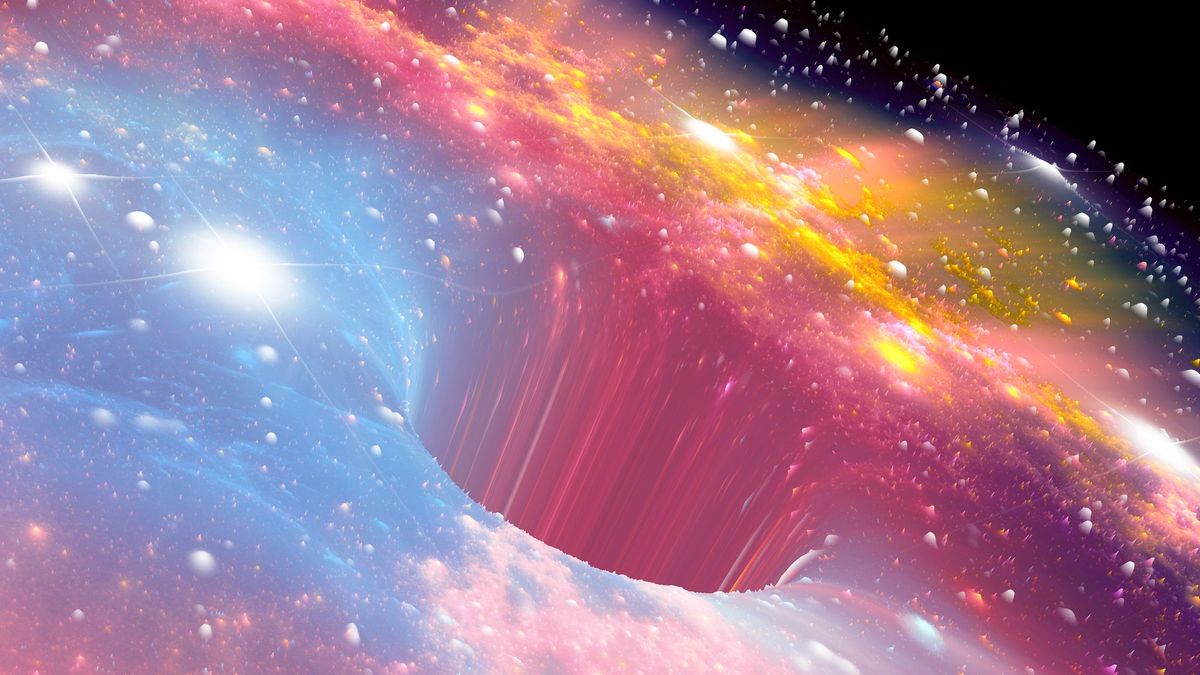Wormholes might bend light like black holes do -- and that could be the key to finding them
By JoAnna Wendel published 2 days ago
If wormholes exist, they might magnify distant objects according to Einstein's theory of relativity — and that makes it possible for us to find them, new research suggests.

An illustration of a rainbow-colored cloud of gas in space getting sucked into a funnel-like opening
An illustration of a theoretical wormhole tunneling through space-time (Image credit: Getty)
If wormholes exist, they could magnify the light of distant objects by up to 100,000 times — and that could be the key to finding them, according to research published Jan. 19 in the journal Physical Review D.
Wormholes are theoretical funnel-shaped portals through which matter (or perhaps spacecraft) could travel great distances. To imagine a wormhole, suppose all of the universe were a sheet of paper. If your starting point were a dot at the top of the sheet and your destination were a dot on the bottom of the sheet, the wormhole would appear if you folded that sheet of paper so the two dots met. You could traverse the entire sheet in an instant, rather than traveling the entire length of the sheet.
Wormholes have never been proven to exist, but physicists have nonetheless spent decades theorizing what these exotic objects might look and how they might behave. In their new paper, the researchers built a model to simulate an electrically charged, spherical wormhole and its effects on the universe around it. The researchers wanted to find out whether wormholes could be detectable by their observed effects on their surroundings.
The researchers' model shows that wormholes, should they exist, could be massive enough to trigger one aspect of Einstein's theory of relativity: that extremely massive objects bend the fabric of space-time to such a degree that they cause light to curve. This bent light magnifies whatever lurks behind the massive object, as seen from our perspective on Earth. This phenomenon is known as "microlensing," and it allows scientists to use massive objects, like galaxies and black holes, to view extremely distant objects, like stars and galaxies from the early universe.
More:
https://www.livescience.com/wormholes-might-bend-light-like-black-holes-do-and-that-could-be-the-key-to-finding-them
